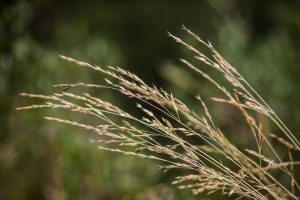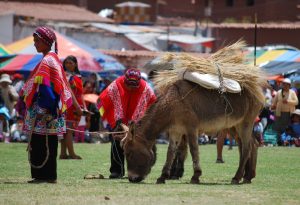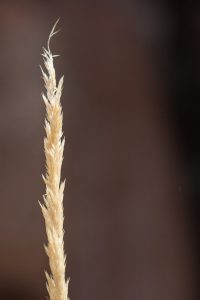Ichu, the Tough Bunch Grass of the Andes Sustains Life

Andean bunch grass, also called fierce straw (paja brava) or the indigenous ichu, grows in the mountains around 3600 meters above sea level. It reaches a meter or more in height. It was very important in ancient times and even today has lots of uses in the towns and communities close to Cuzco.
The straw from the bunch grass is gathered as soon as the rainy season ends, in the months of May through September.
A scythe, an arched knife with sharp teeth and a wooden handle, is used to cut the ichu grass, or straw. After cutting it, the stems of grass are tied into bundles in order to transport them on mule or donkey back to where they are needed.

Ichu has a great variety of uses. Indeed, it is unusually important in our traditions. We see it used in the construction of houses. It was used and continues to be used in the making of adobes, dried mud bricks which contain straw. The ichu plays the role of holding the mud together in the final bricks. In the city of Cuzco as well as in surrounding areas you will still find many homes made of adobe.
The straw is also used to thatch the roofs of traditional homes. With different technique of tying the bundles of ichu the could make roofs in the form of pyramids, so when the rain falls they will be very resistant to moisture. Each roof would last some five to six years. The straw would also insulate the home, keeping the heat in and making it very comfortable in our cold Andean climate.


Just like with the wool of llamas and alpacas, our ancestors figured out how to make maximal use of our straw. From it they made ropes. They would twine them from the finest rope to very thick ones that could sustain bridges. The massive ropes stretched from one side of rivers to another. You can still find examples of this kind of work.
Straw would also form the base in our traditional storage towers, when mixed with the herb muña, to help conserve our agricultural produce and protect tubers and grains from pests.
This tough grass also helps us make our papa helada, once frozen potatoes. You leave the potatoes out at night, on a very cold night, on a bed of straw and the freeze then thaw in the morning. Without the straw the earth would absorb the potatoes moisture and it would be much harder to make good papa helada.
We also use the straw to make molds for Andean, hand-made cheese.

People would also use the straw to make isanqas, which are strainers for chicha. First they would make a basket from the creeper we call vijuco or forest rope. Inside it we would lay straw and then strain the chicha.
Finally, this tough grass, the ichu, is an important food for our animals such as llama, alpaca, vicuña, and the guanacos.
With the passage of time and the development of new technologies many of the important uses of our ichu have been forgotten. Nevertheless, it continues to be a key to life in our Andes.






hello really interesting about the Desert Grass having so many “uses.